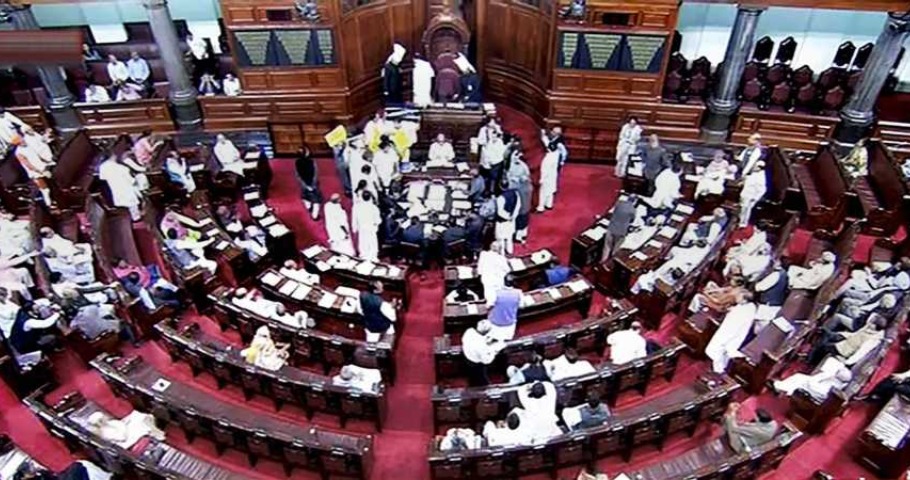
Rajya Sabha sees saffron surge as NDA breaches 100-mark
The Bharatiya Janata Party (BJP)-led National Democratic Alliance (NDA) has, for the first time, breached the 100-mark in the 245-member Rajya Sabha, thus securing a comfortable position in the Upper House of the Parliament.

The Bharatiya Janata Party (BJP)-led National Democratic Alliance (NDA) has, for the first time, breached the 100-mark in the 245-member Rajya Sabha, thus securing a comfortable position in the Upper House of the Parliament.
In the 19 seats that went to polls on Friday, the BJP gained crucial ground by bagging eight seats, taking its Upper House tally to a total of 86 as against the Congress’s 41. The BJP had earlier won three seats unopposed. The Congress and the YSR Congress won four seats each and others three in the June 19 election.
The Election Commission had announced biennial polls to 61 seats, including 55 in March, but the process was delayed due to the novel coronavirus pandemic. Of these, 42 members were elected unopposed earlier while the rest 19 were contested on Friday.
Now, with over 100 members, the NDA is unlikely to face any serious numerical challenge in pushing key legislations in the Upper House if the support of the allied nominated members, friendly parties like AIADMK (9), BJD (9), YSRC (6), and other small parties is counted.
The BJP won a couple of more seats than it could have on the strength of its numbers because of defection from several Congress legislators in Madhya Pradesh and Gujarat. In total, the BJP won 17, Congress nine, BJP-ally JD(U) three, BJD and the TMC four each, AIADMK and DMK three each, NCP, RJD and the TRS two each, and others rest, official sources said.
Related news: Rajya Sabha polls: Scindia, Digvijaya elected; YSRC clean sweeps Andhra
The crumbling strength of the Opposition, whose key pillars include the Congress, TMC and the Left, has been evident since last year after Prime Minister Narendra Modi led the BJP to its biggest ever victory as it bagged 303 seats in Lok Sabha election.
It prompted a host of defections from the Opposition, including Rajya Sabha members of the Congress, TDP and the Samajwadi Party, to the BJP, and many non-NDA regional parties chose to back the government in Parliament on crucial issues.
The Congress has accused the BJP of horse-trading, alleging that it had engineered defections from its ranks for political gains.
The government managed big support in Parliament to its resolution to nullify Article 370 and key bills like the bifurcation of the erstwhile state of Jammu and Kashmir into Union territories and criminal prosecution for instant divorce by Muslim men.
The contentious Citizenship (Amendment) Bill was also passed in both the Houses.
The legislative agenda of the Modi government in its first term was often hampered in Parliament due to the Opposition’s numerical superiority in the Upper House, and the Congress had more numbers than the BJP in first few years.
However, the BJP’s impressive gains in the assembly elections, coupled with the Congress losing power in several states, resulted in slow but steady rise in the government’s numbers in the House.
Though the below-par show of the BJP in state selections since 2018 has also meant that its goal of gaining a majority on its own in the Rajya Sabha remains far from being achieved.
(With inputs from agencies)

